Malabi Recipe
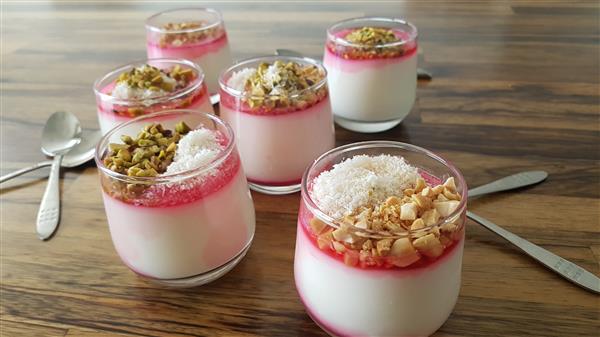
Malabi (also known as Muhallebi or Muhallabi) – is a middle eastern dessert. The malabi is very similar to a milk pudding and served with rose water/orange blossom flavors and served with pistachios, peanuts or other nuts. the malabi is served cold and it is a perfect dessert for hot summer days.
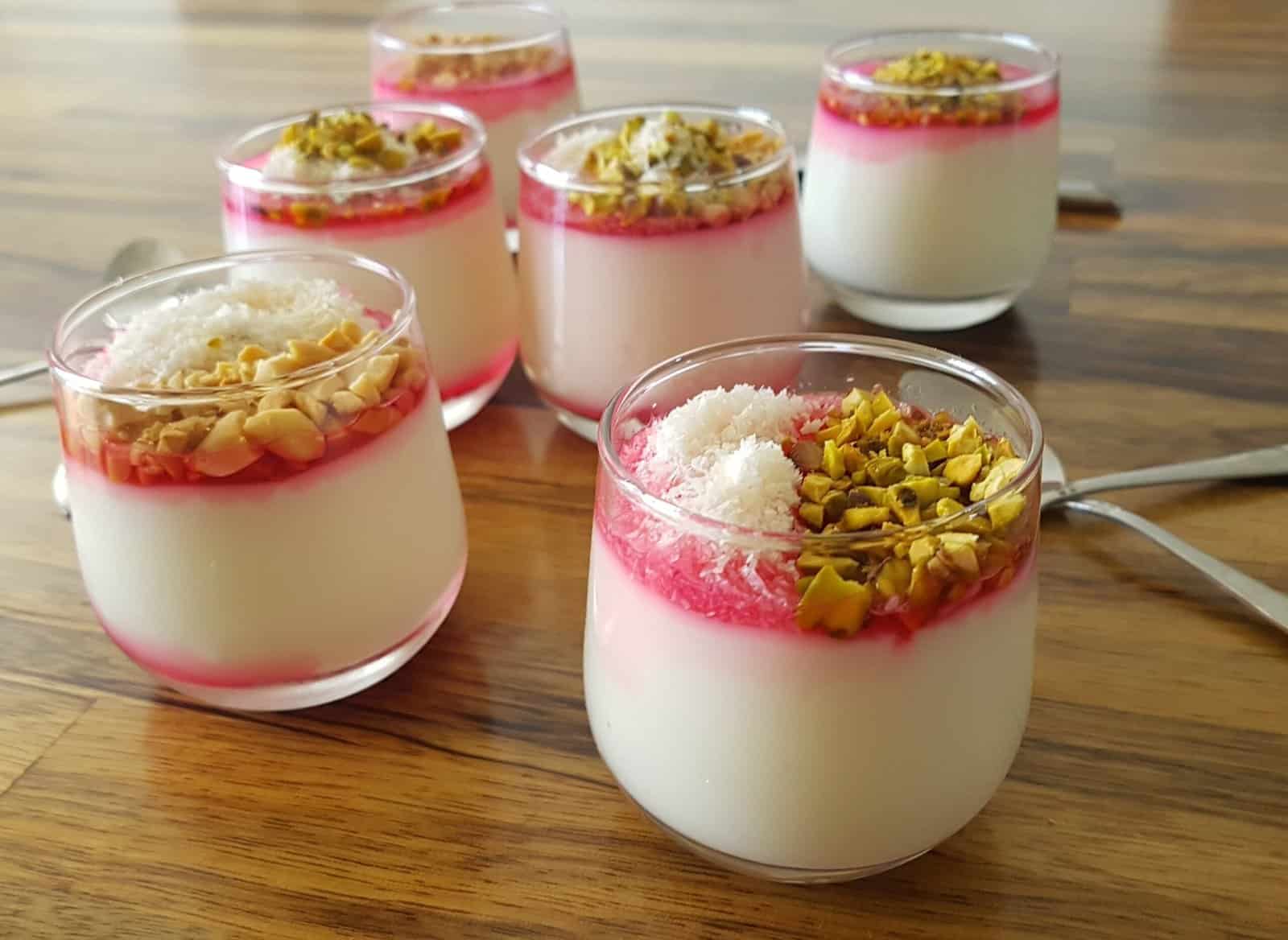
Malabi is one of those classic Israeli desserts that takes me right back to my childhood. Growing up in Israel, it was something we’d eat all the time, especially during the summer after a day spent at the beach. It’s light, refreshing, and the perfect way to cool off. It’s no secret that I’m a huge fan of Middle Eastern desserts—my basbousa recipe has become a hit on social media, and my rolled baklava is always a crowd-pleaser. Even Lebanese Night Dessert is something I whip up for my family every few months. But what I love most about malebi is its simplicity. It’s just basic ingredients and a few minutes of work, yet the result is a creamy, fragrant pudding that’s hard to resist. Whether you’re making a traditional malabi recipe or switching things up with coconut malabi, it’s always a dessert that brings a bit of nostalgia and a lot of flavor.
What is Malabi Dessert
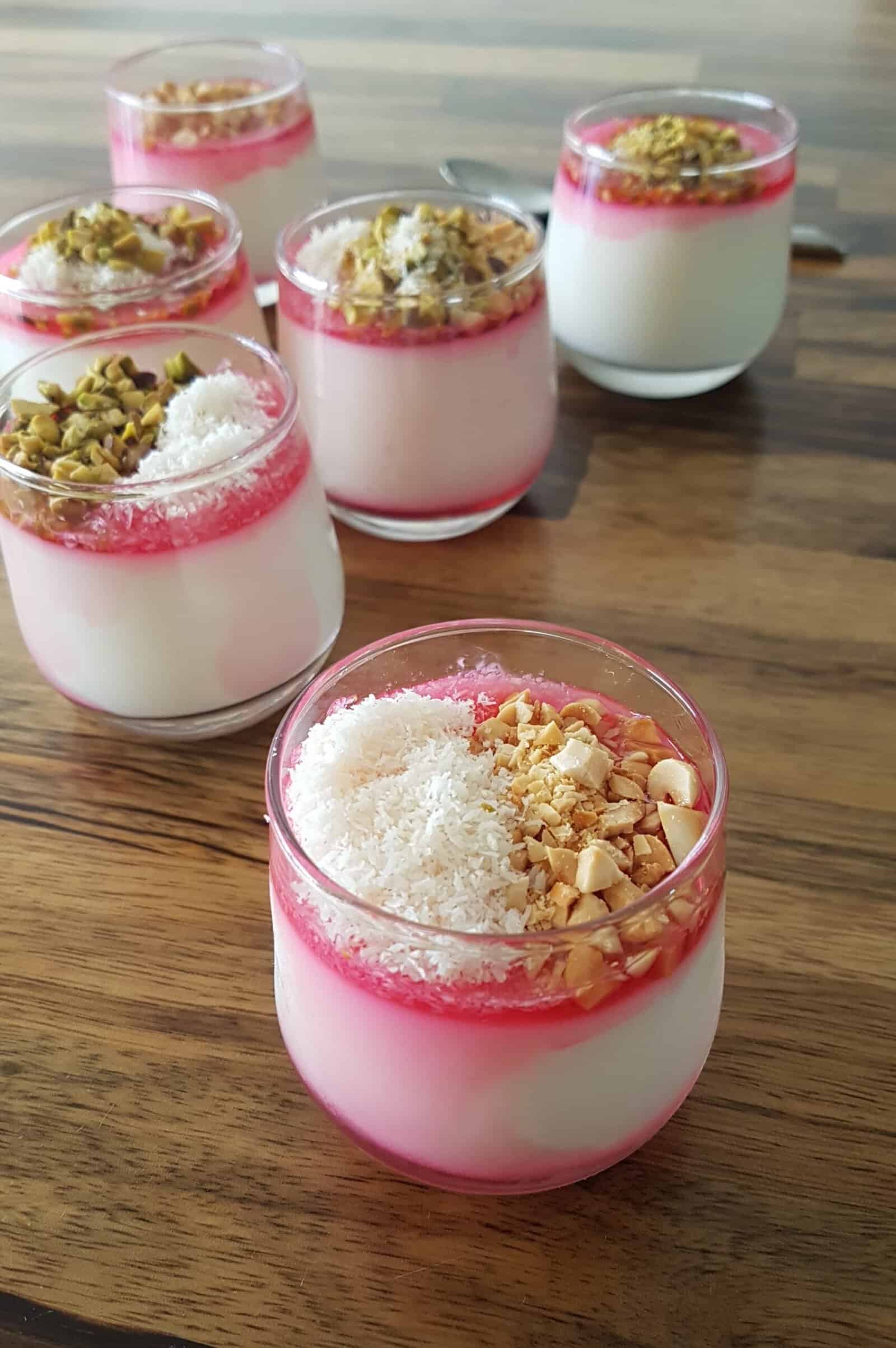
Malabi is a traditional Middle Eastern dessert that is loved for its creamy, pudding-like texture and fragrant rose water flavor. Often compared to panna cotta, malabi is a simple yet indulgent dessert made with milk, cream, cornstarch, and sugar. Its light and silky consistency makes it a delightful treat, especially when served cold, making it a popular choice in warm climates. One of the defining features of malabi is the vibrant rose water syrup, which adds a sweet, floral touch and is often colored red for a striking appearance. The dessert is typically topped with chopped nuts, like pistachios or peanuts, and sometimes desiccated coconut, creating a delicious combination of textures. Easy to prepare with just a few ingredients, malabi is a versatile dessert that can be adapted to suit various tastes.
Ingredients for Malabi
Here’s a breakdown of each ingredient used in the malabi dessert and its role in creating this delicious treat:
- Milk: The base of the pudding, milk provides a smooth and creamy texture. It acts as the main liquid in the recipe and balances the richness of the other ingredients.
- Heavy Cream: Adds richness and a velvety smoothness to the pudding, giving it a luxurious mouthfeel. The cream enhances the creaminess that makes malabi so indulgent, similar to panna cotta.
- Cornstarch: The key thickening agent in the recipe, cornstarch helps the pudding set to its perfect, firm consistency while still remaining soft and creamy.
- Sugar: Sweetens the pudding and balances the flavor. It dissolves into the milk and cream, ensuring the malabi is delicately sweet.
- Rose Water: Provides the signature floral aroma and flavor that makes malabi unique. Rose water infuses the dessert with a subtle, fragrant sweetness.
- Water (for syrup): The base for the rose water syrup, used to dissolve the sugar and create a light, sweet syrup that coats the pudding.
- Sugar (for syrup): Sweetens the syrup that is drizzled over the pudding, complementing the floral notes from the rose water.
- Red Food Coloring: Optional but often used to give the syrup its characteristic red hue, making the dessert visually striking.
- Chopped Peanuts/Pistachios: The crunchy topping provides a contrast to the smooth texture of the pudding, adding a layer of flavor and texture.
- Shredded or Desiccated Coconut (optional): Another optional topping, coconut adds an extra element of texture and a mild sweetness that pairs well with the floral and nutty flavors of the dessert.
Substitutes and Variations
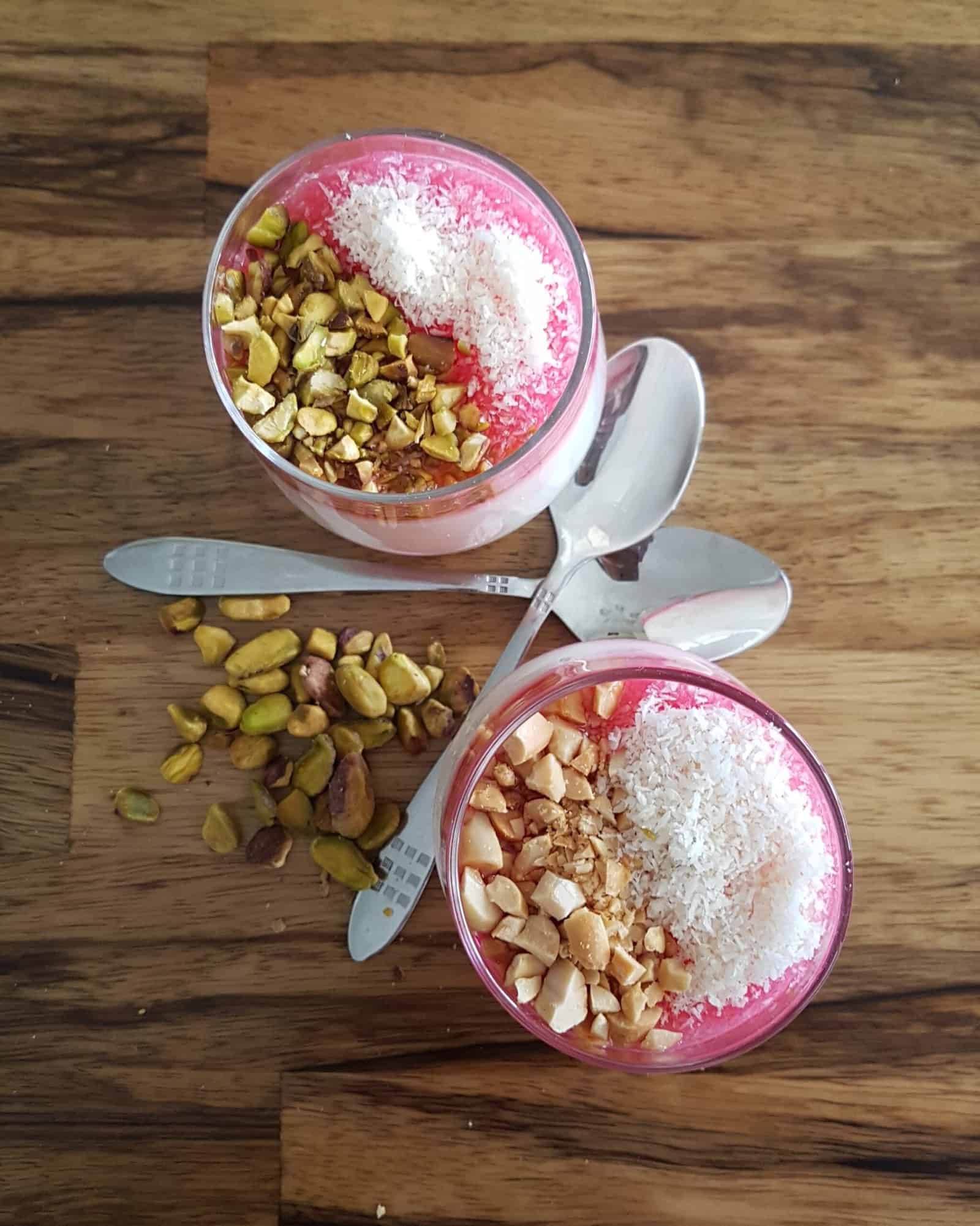
Here are some great substitutes and variations to make your malabi dessert unique or suited to different dietary needs:
Substitutes:
- Milk: Swap regular milk with almond milk, coconut milk, or soy milk for a dairy-free version. Coconut milk adds a tropical twist and pairs beautifully with the rose water.
- Heavy Cream: You can replace the cream with coconut cream for a dairy-free, slightly richer alternative. It also enhances the flavor when making a coconut malabi.
- Sugar: If you want a lower-sugar option, you can use maple syrup, honey, or coconut sugar to sweeten the pudding and syrup. For a sugar-free alternative, try stevia or monk fruit sweetener.
- Rose Water: For a different flavor, you can substitute rose water with orange blossom water for a citrusy, floral twist. Vanilla extract is another option for those who prefer a more neutral flavor.
Variations:
- Coconut Malabi: Use coconut milk and coconut cream in the pudding for an extra creamy texture, and top it with shredded coconut for an irresistible coconut malabi.
- Chocolate Malabi: For a richer version, add a few tablespoons of cocoa powder or melted dark chocolate to the pudding mixture. The result is a decadent chocolate malabi that’s perfect for chocolate lovers.
- Fruit Toppings: Instead of traditional nuts and coconut, top your malabi with fresh berries, pomegranate seeds, or even a mango puree for a fruity variation.
- Vegan Malabi: To make a vegan version, use plant-based milk and cream (like almond or coconut), and replace sugar with agave syrup or maple syrup. It’s just as creamy and delicious!
How to Make Coconut Malabi
Making coconut malabi is a simple and delicious twist on the classic malabi recipe, with a rich, tropical flavor. Here’s how you can prepare it:
*all the quantities are in the recipe card
Ingredients:
- Coconut Milk: Replaces the regular milk for a tropical flavor and creamy texture.
- Coconut Cream: Adds richness, making the pudding smooth and indulgent.
- Cornstarch: Used as the thickening agent to set the pudding.
- Sugar: Sweetens the dessert, balancing the coconut’s natural flavors.
- Rose Water: Provides the signature floral touch.
- Shredded Coconut (optional): Adds extra coconut flavor and texture as a topping.
- Toppings: You can still use chopped nuts like pistachios or peanuts, and shredded coconut for garnish.
Instructions:
- Prepare the coconut pudding:
In a bowl, whisk together cornstarch with a bit of coconut milk and rose water until smooth. This mixture will help thicken the malabi. - Heat the coconut mixture:
In a saucepan, combine the remaining coconut milk, coconut cream, and sugar. Bring the mixture to a gentle simmer, stirring constantly until the sugar dissolves. - Thicken the pudding:
Once the mixture reaches a simmer, lower the heat and gradually whisk in the cornstarch mixture. Continue stirring for 3-4 minutes until the pudding thickens to a smooth, custard-like consistency. - Set the malabi:
Pour the coconut malabi into serving dishes. Cover with plastic wrap, ensuring the wrap touches the surface to avoid skin forming. Let it cool to room temperature, then refrigerate for at least 4 hours or overnight. - Make the syrup:
While the malabi sets, prepare the rose water syrup. Combine water, sugar, and rose water in a saucepan and bring it to a simmer until the sugar dissolves. Add a few drops of red food coloring if desired, then set aside to cool. - Serve:
Once the malabi is chilled and firm, top it with the rose water syrup. Add a sprinkle of shredded coconut and chopped pistachios or peanuts for crunch and extra flavor.
Coconut malabi is a refreshing, tropical twist on the classic Middle Eastern dessert, perfect for any occasion!
How to Store Malabi Dessert
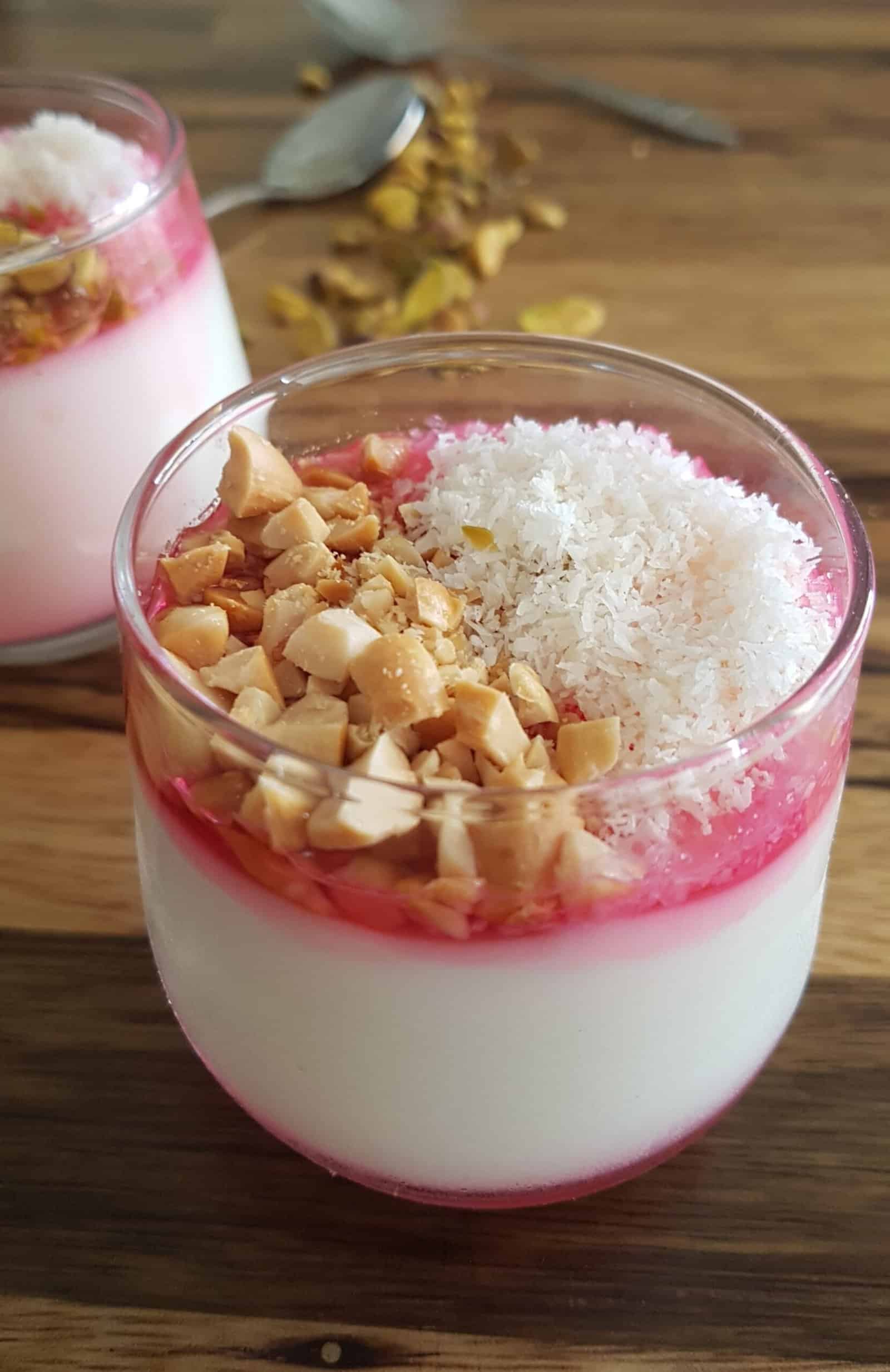
- Refrigeration:
Malabi should be stored in the refrigerator once it has cooled down to room temperature. Cover each serving dish tightly with plastic wrap or an airtight lid to prevent the pudding from absorbing any odors from the fridge. It will stay fresh for up to 3-4 days. - Avoid freezing:
It’s best not to freeze malabi, as the texture can become grainy when thawed due to the dairy and cornstarch mixture. Freezing can alter the smooth and creamy consistency that makes malabi so enjoyable. - Syrup storage:
If you have leftover rose water syrup, you can store it in a separate airtight container in the refrigerator for up to a week. When ready to serve, reheat it slightly to loosen the syrup before drizzling over the malabi.
By storing malabi properly, you can enjoy this delicious dessert for a few days without losing any of its fresh, creamy texture!
More Middle Eastern Recipes

Malabi Recipe
Ingredients
For the pudding:
- 4 cups (1 L) Milk
- 1 cup (240 ml) Heavy cream
- ⅔ cup (85 g) Cornstarch
- ½ cup (100 g) Sugar
- 1 tsp Rose water
For the syrup:
- ½ cup (120 ml) Water
- ½ cup (100 g) ugar
- 1 tsp Rose water
- Few drops Red food coloring
For topping:
- ½ cup (65 g) Peanuts/pistachios chopped
- Shredded or desiccated coconut optional
Instructions
Make the pudding:
- In a medium bowl mix 1 cup of milk with cornstarch and rose water. Mix until smooth.
- To a medium size pot pour 3 cups of milk and heavy cream. Add sugar and bring to a simmer, stirring constantly. Once the milk boils, turn the heat to low and add the cornstarch mixture. cook over low heat for 3-4 minutes, stirring constantly until the mixture begins to thicken.
- pour into serving dishes. Cover immediately with plastic wrap and cool to room temperature, then refrigerate for at least 4 hours or overnight.
Make the syrup:
- In a pan over medium-high heat bring to a boil water, sugar and rose water. When boiling add food coloring. Let boil for 2 more minutes and turn off the heat. Let cool completely.
- When the malabi chilled pour 1-2 tbsp of the syrup on the malabi, add crushed peanuts or pistachios and shredded coconut (optional).
Video

Notes
- Watch the Video: For a better understanding of the recipe, I always recommend watching the video recipe, which includes a step-by-step guide to help you succeed.
- FAQs: Make sure you read the FAQs for this recipe which are located below the recipe box for additional tips and troubleshooting! For extra tips and variations read the article.
Nutrition
Common Questions
Malabi is a traditional Middle Eastern dessert, believed to have Persian origins, and it has become popular throughout Israel and surrounding countries. This creamy, pudding-like dessert is typically flavored with rose water and served with a sweet syrup, often topped with nuts or shredded coconut.
To make vegan malabi, simply substitute regular milk with plant-based options like almond, soy, or coconut milk, and replace heavy cream with coconut cream. Also, use a plant-based sweetener such as maple syrup or agave instead of honey. The process remains the same, and you’ll still get a creamy and delicious vegan malabi.
Malabi should be stored in the refrigerator, covered with plastic wrap or in an airtight container. It can stay fresh for up to 3-4 days. Avoid freezing it, as the texture may become grainy after thawing.
Yes, malabi is often compared to panna cotta due to its creamy, custard-like consistency. Both desserts use milk or cream as a base and are set with a thickening agent, although malabi is traditionally thickened with cornstarch rather than gelatin.
Absolutely! Malabi is versatile and can be flavored with various ingredients. Aside from rose water, you can try adding vanilla extract, orange blossom water, or even cocoa powder to create chocolate malabi. For a tropical twist, you can use coconut milk and top it with shredded coconut.
Yes, you can easily omit the food coloring if you prefer a natural look, as it doesn’t affect the flavor of the dessert. If you want a natural alternative, you can use beet juice or pomegranate juice for a pink hue, or simply leave it out for a more traditional, clear syrup. The choice is entirely up to your preference!

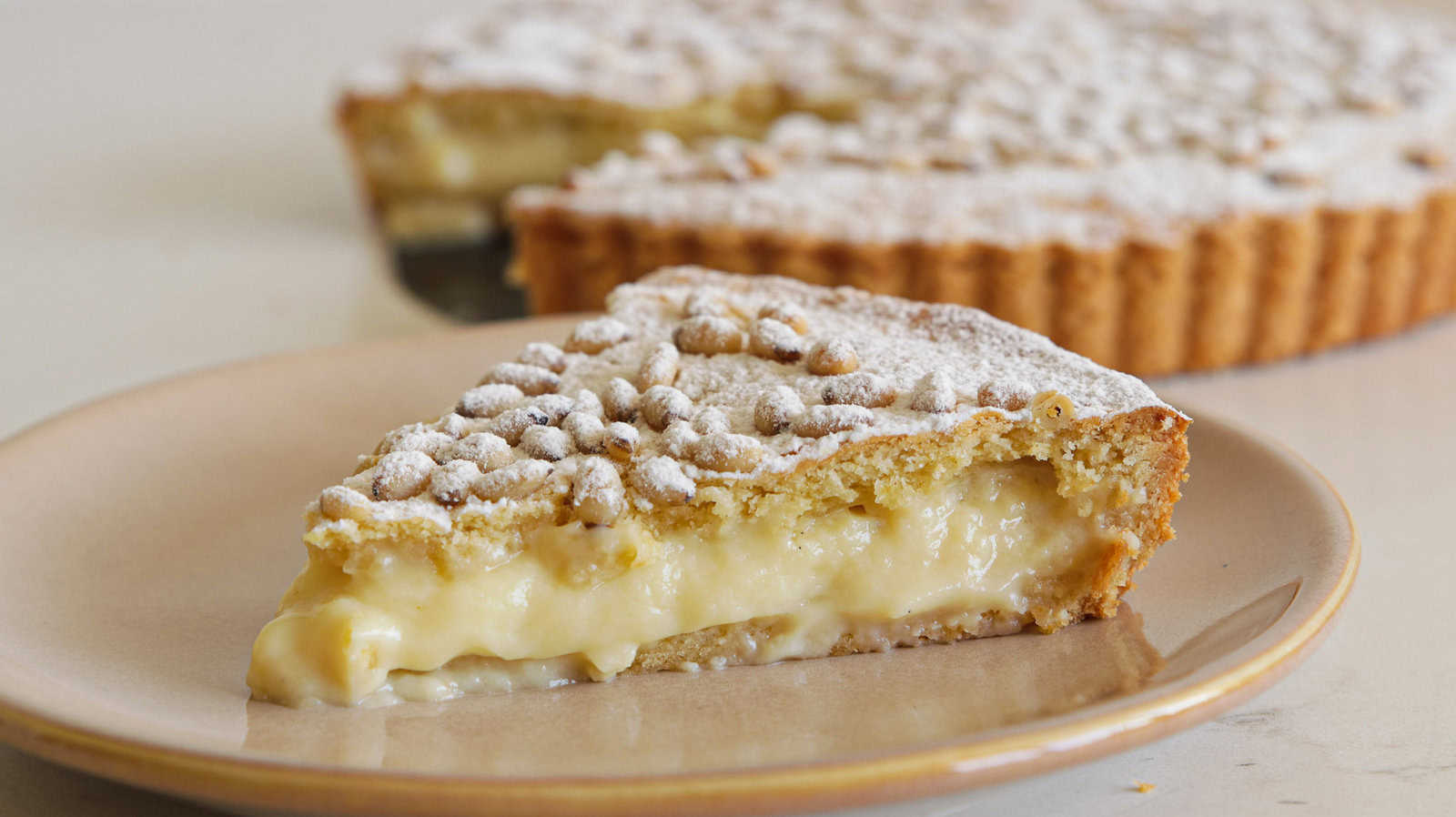

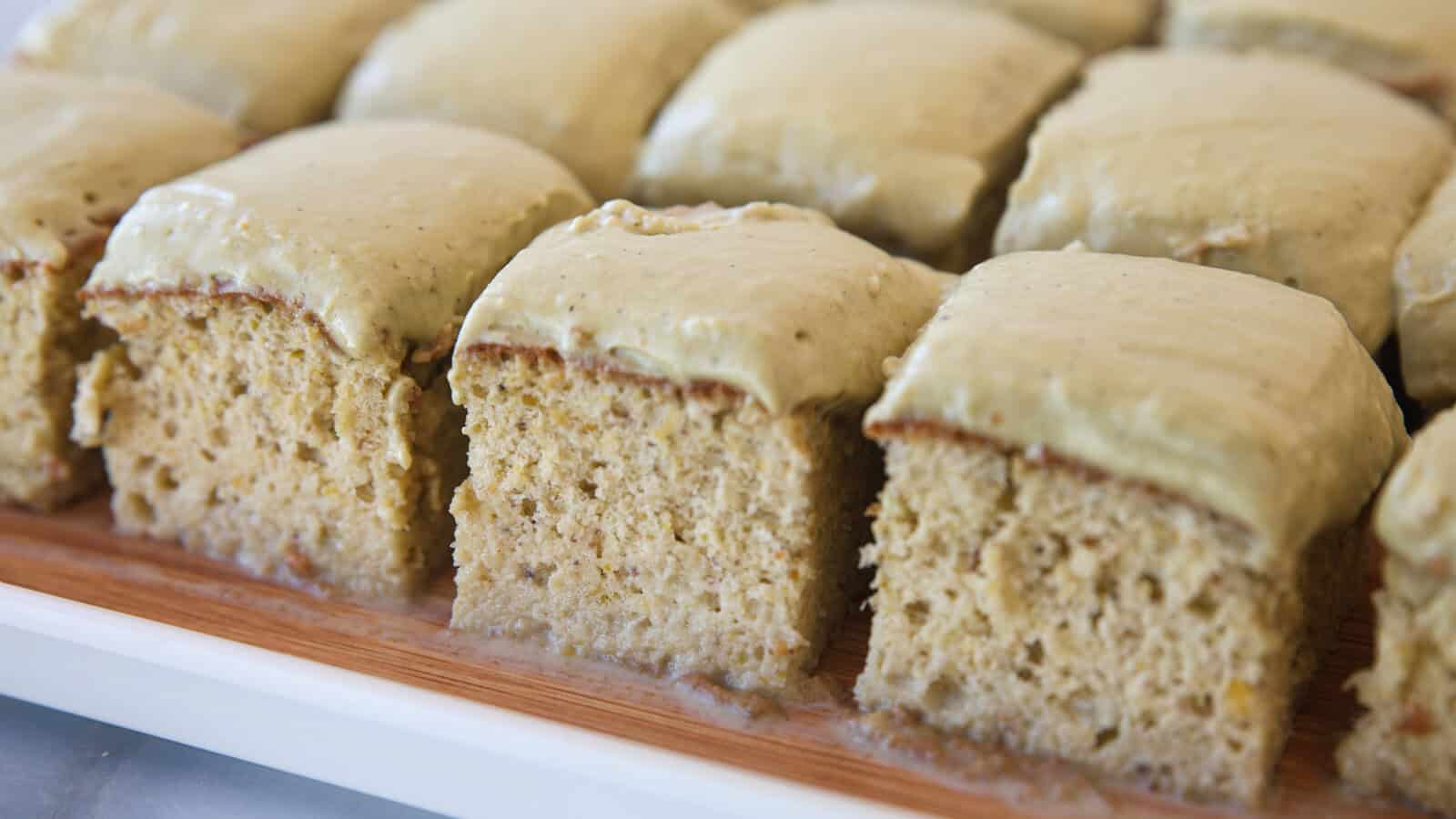
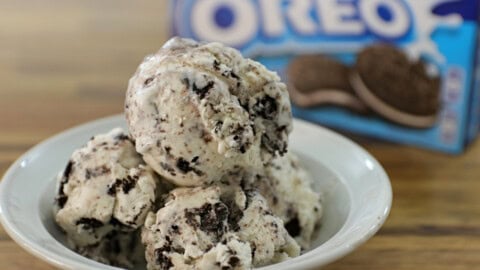
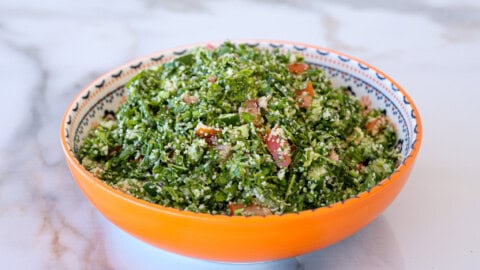

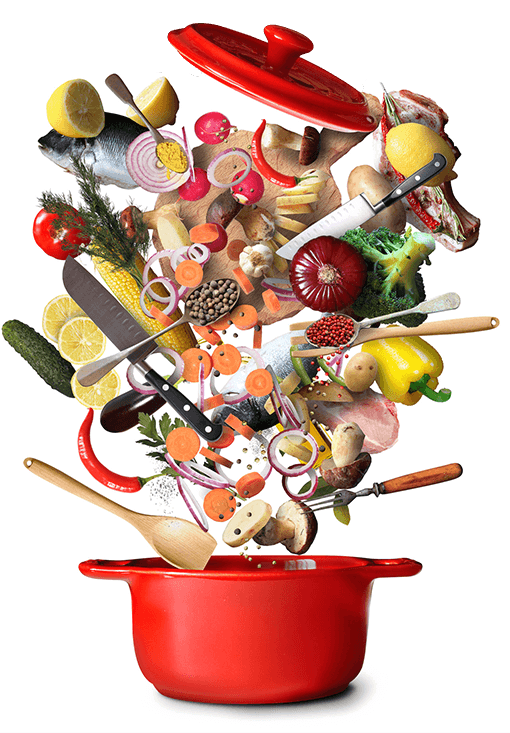

I really appreciate your efforts to educate us about your experience
I really appreciate your efforts to educate us about your experience